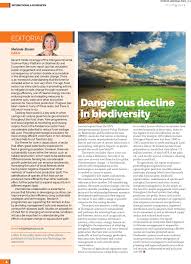The Intersection of Science and Technology
Science and technology are two interconnected fields that constantly influence and shape each other. While science seeks to understand the natural world through observation and experimentation, technology applies scientific knowledge to solve practical problems and improve our daily lives.
Advancements in science often lead to technological innovations that revolutionise industries, enhance communication, and drive progress in society. For example, the discovery of electricity by scientists paved the way for the development of various technologies such as light bulbs, telecommunication systems, and electric vehicles.
On the other hand, technology also fuels scientific research by providing tools and instruments that enable scientists to gather data more efficiently, analyse complex systems, and simulate experiments. High-performance computing, for instance, has significantly accelerated research in fields like genomics, climate modelling, and particle physics.
The synergy between science and technology is evident in various areas such as healthcare, transportation, energy production, and environmental conservation. Breakthroughs in medical science have led to the development of advanced diagnostic tools, life-saving treatments, and personalised medicine made possible by cutting-edge technologies like artificial intelligence and gene editing.
In the realm of space exploration, scientific discoveries about the universe have driven technological advancements in spacecraft design, satellite communications, and remote sensing technologies that have transformed our understanding of outer space.
As we move towards an increasingly digitalised world driven by data analytics, machine learning algorithms, and Internet of Things (IoT) devices, the collaboration between science and technology becomes even more crucial for addressing complex global challenges such as climate change, cybersecurity threats, and public health crises.
In conclusion, the symbiotic relationship between science and technology continues to push the boundaries of human knowledge and capabilities. By fostering innovation through interdisciplinary collaboration and embracing ethical considerations in technological development, we can harness the power of science and technology to create a more sustainable future for all.
Understanding Key Concepts in Science and Technology: AI, Cryptocurrencies, Gene Editing, Climate Change, and Quantum Computing
- What is artificial intelligence and how does it work?
- How do cryptocurrencies like Bitcoin function?
- What are the potential benefits and risks of gene editing technology?
- How does climate change impact the environment and what can be done to mitigate its effects?
- What is the significance of quantum computing and how does it differ from classical computing?
What is artificial intelligence and how does it work?
Artificial intelligence (AI) refers to the simulation of human intelligence in machines that are programmed to think and learn like humans. These systems can perform tasks such as recognising speech, making decisions, and translating languages. AI works by using algorithms and large datasets to identify patterns and make predictions. Machine learning, a subset of AI, involves training models on data so they can improve their performance over time without being explicitly programmed for each task. Deep learning, another subset, uses neural networks with many layers to analyse complex data structures. Together, these technologies enable AI systems to solve problems and perform functions that were previously thought to require human intelligence.
How do cryptocurrencies like Bitcoin function?
Cryptocurrencies like Bitcoin operate on a decentralised digital ledger technology called blockchain. Essentially, Bitcoin functions through a network of computers (nodes) that validate and record transactions in blocks, which are then linked together to form a secure and transparent chain. Each transaction is encrypted and added to the blockchain, ensuring immutability and preventing double-spending. Miners verify transactions by solving complex mathematical puzzles, adding new blocks to the chain and receiving rewards in the form of newly minted Bitcoins. This decentralised system eliminates the need for intermediaries like banks, enabling peer-to-peer transactions that are secure, fast, and resistant to censorship.
What are the potential benefits and risks of gene editing technology?
Gene editing technology holds immense promise in revolutionising healthcare, agriculture, and biotechnology. By allowing precise modifications to genetic material, gene editing has the potential to treat genetic disorders, enhance crop resilience, and develop new therapies for various diseases. However, along with these benefits come ethical concerns and potential risks. The ability to manipulate genes raises questions about the implications of altering the human germline, the unintended consequences of genetic modifications, and the unequal access to gene editing technologies. Furthermore, there are concerns about the long-term effects on biodiversity and ecosystems if genetically modified organisms are released into the environment without proper regulation. Balancing the potential benefits of gene editing with its ethical considerations and risks is crucial in harnessing this technology responsibly for the betterment of society while ensuring its safe and equitable application.
How does climate change impact the environment and what can be done to mitigate its effects?
Climate change has profound effects on the environment, leading to rising global temperatures, extreme weather events, sea-level rise, and disruptions to ecosystems. To mitigate these impacts, urgent action is needed at both individual and collective levels. Implementing sustainable practices such as reducing carbon emissions, transitioning to renewable energy sources, conserving natural resources, and promoting reforestation efforts are crucial steps in combating climate change. Additionally, raising awareness, advocating for policy changes, investing in green technologies, and fostering international cooperation are essential strategies to mitigate the effects of climate change and safeguard the health of our planet for future generations.
What is the significance of quantum computing and how does it differ from classical computing?
Quantum computing holds immense significance in the realm of science and technology due to its potential to revolutionise computational power and problem-solving capabilities. Unlike classical computing, which relies on bits to process information as either 0s or 1s, quantum computing utilises quantum bits or qubits that can exist in multiple states simultaneously through superposition and entanglement. This unique property allows quantum computers to perform complex calculations at an exponentially faster rate than classical computers, making them well-suited for tackling computationally intensive tasks such as cryptography, optimisation problems, and simulating quantum phenomena. The ability of quantum computing to explore multiple solutions simultaneously through parallel processing offers a promising avenue for unlocking new frontiers in scientific research, artificial intelligence, and other fields that require massive computational power beyond the capabilities of traditional computing systems.




